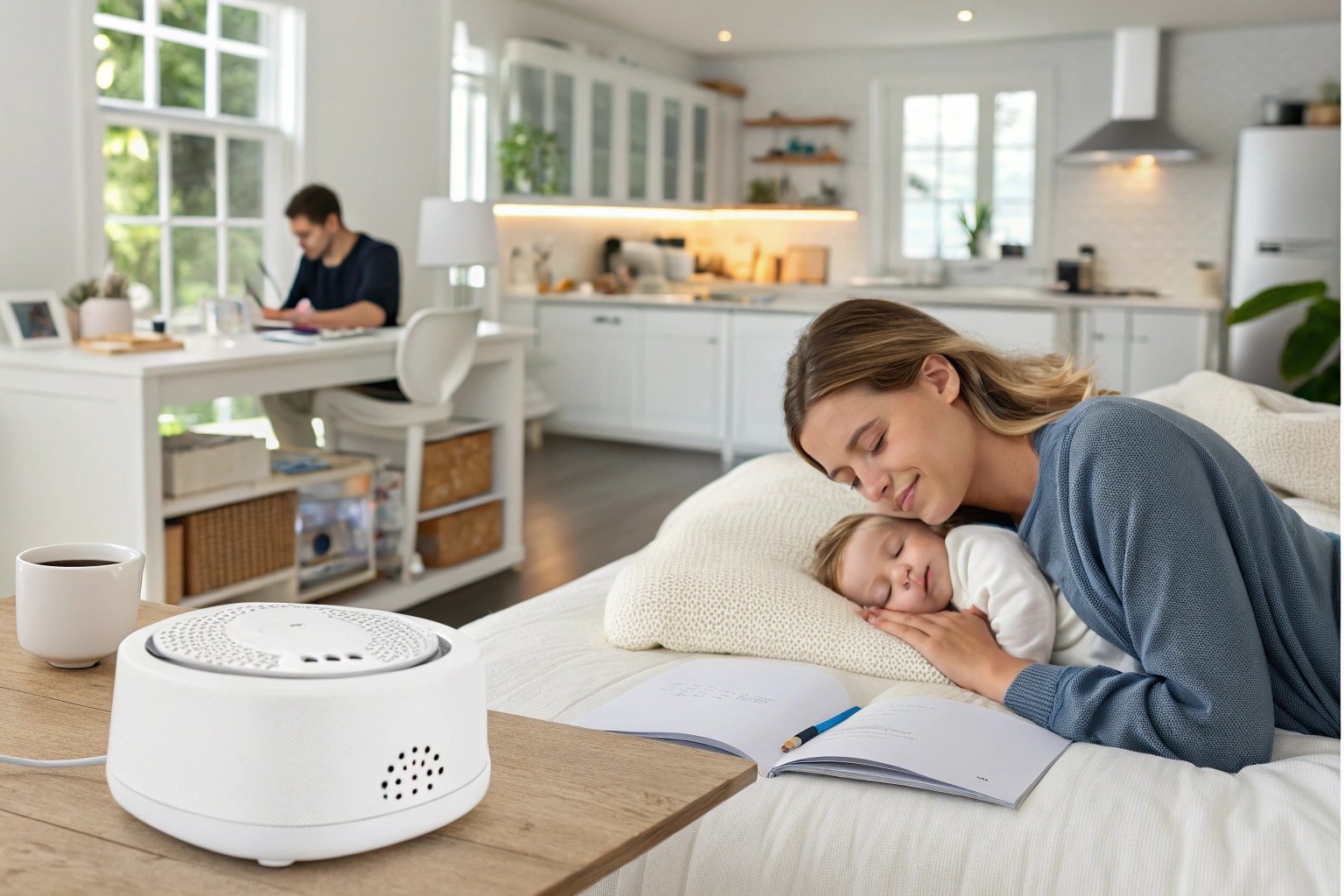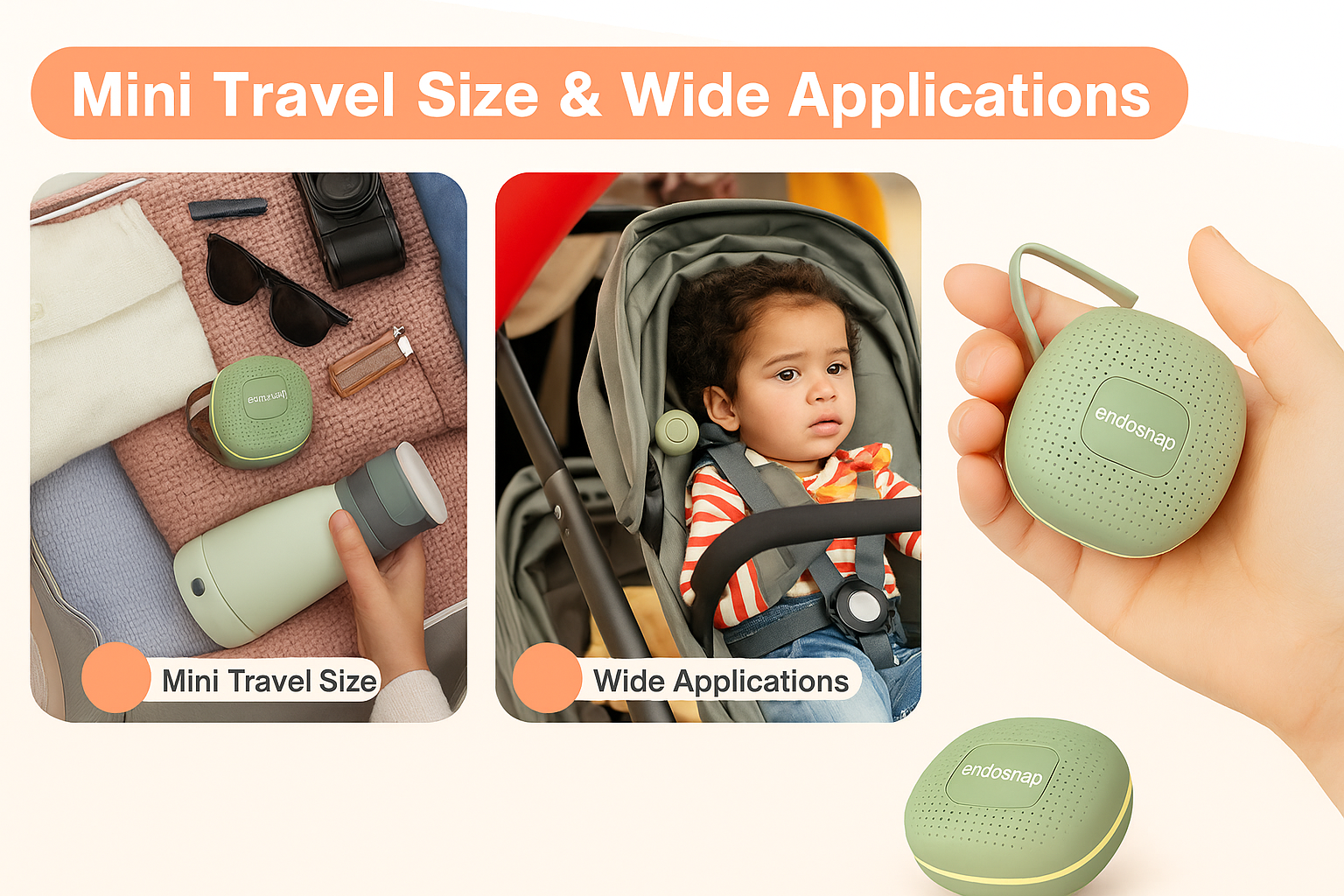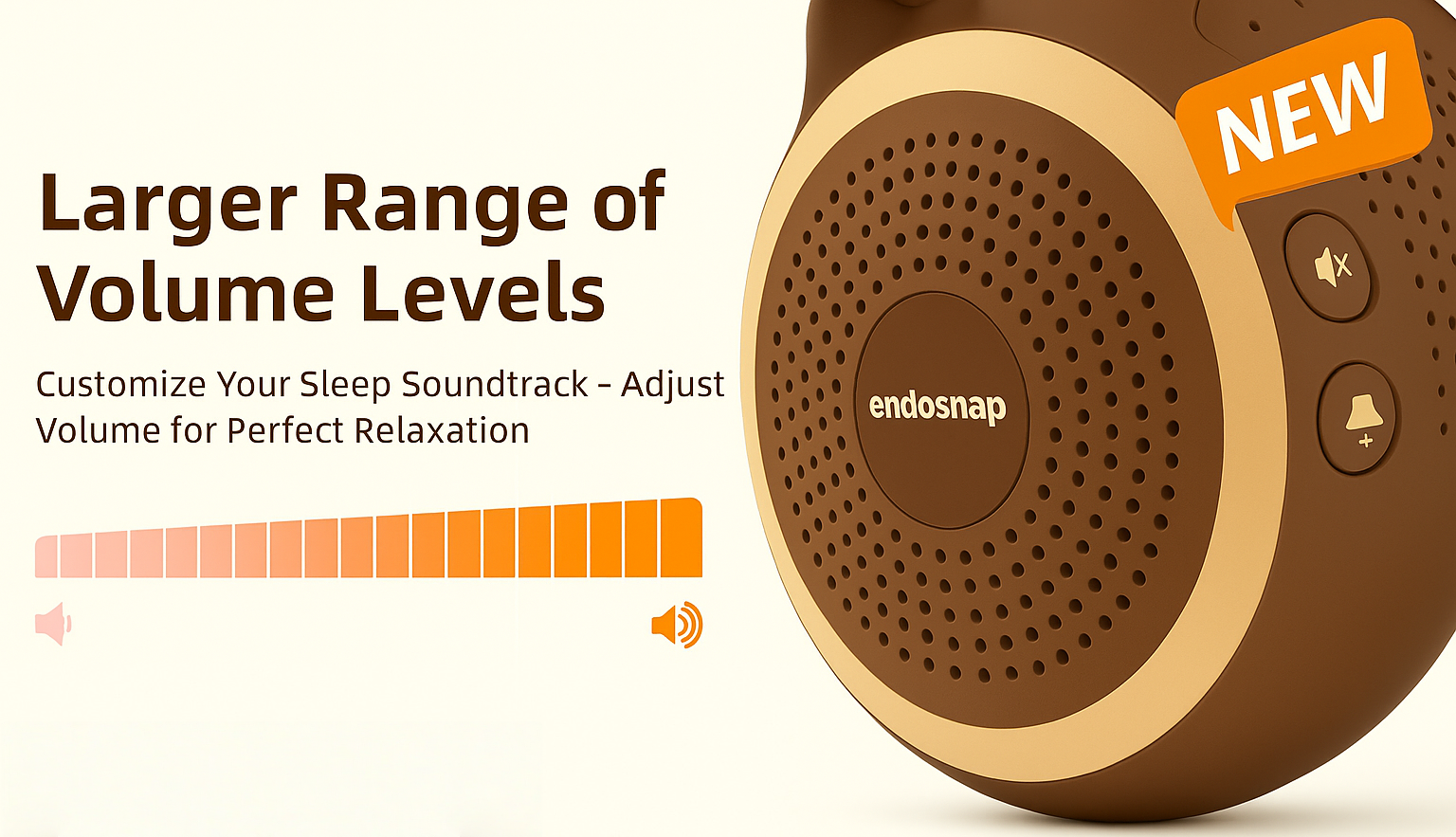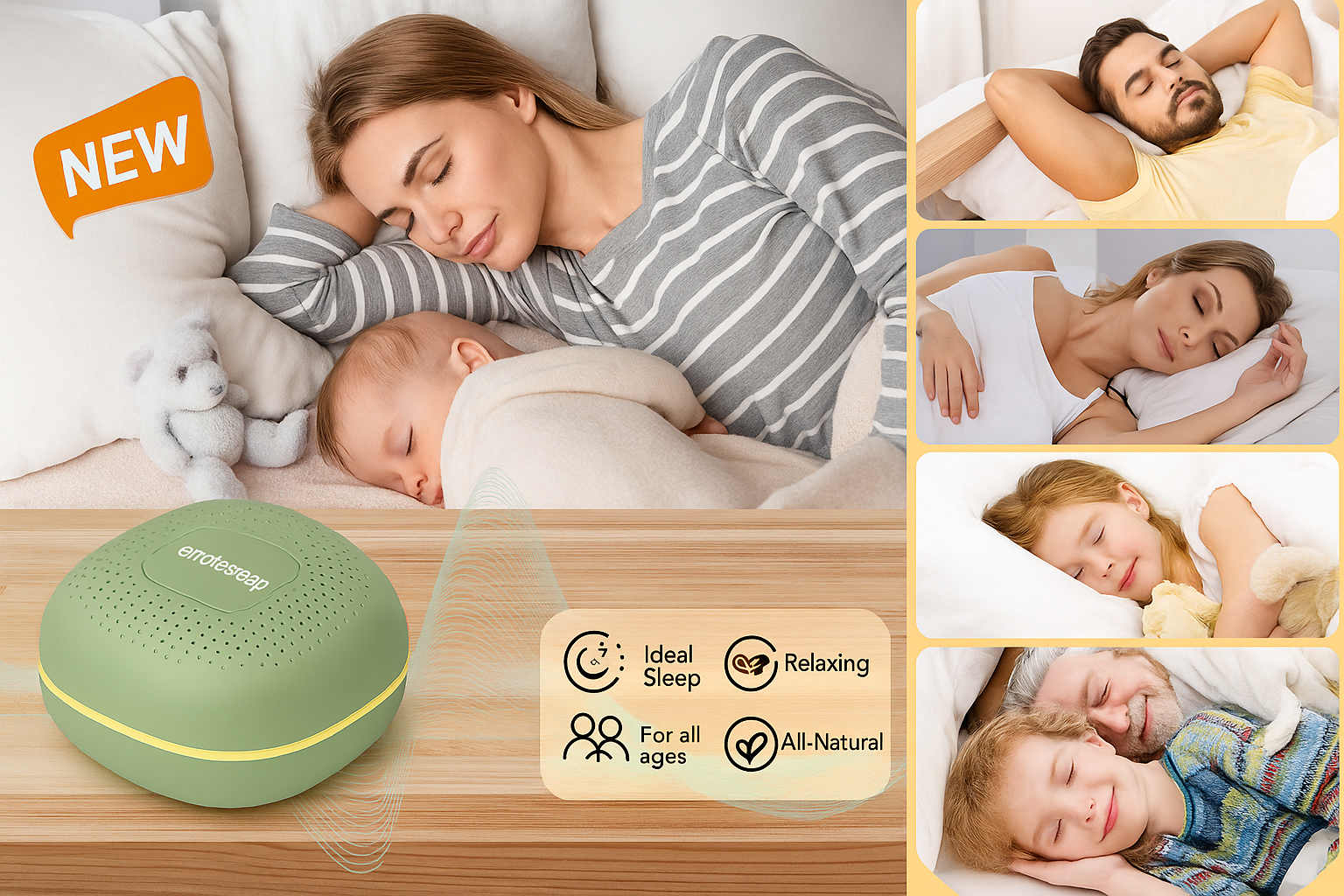Parents often struggle with soothing babies who cry, wake frequently, or have difficulty falling asleep. White noise machines are a common solution, but are they truly safe and effective?
White noise machines can help babies sleep longer and more peacefully, but they should be used with proper volume, distance, and timing.

Infant sleep is sensitive, and understanding both the benefits and precautions of white noise helps parents make informed choices.
How can white noise help babies sleep better?
Babies are easily disturbed by sudden sounds in the home—dogs barking, doors closing, or voices in the hallway.
White noise masks these disruptions, creating a stable environment that reminds babies of the womb.

In the womb, babies are surrounded by rhythmic and consistent sounds. White noise mimics this environment, offering comfort and security. Many studies suggest that babies fall asleep faster and stay asleep longer with gentle background sound.
The steady sound helps block environmental noise, reducing the chance of waking due to sudden disturbances. Parents often find that white noise becomes a reliable part of the bedtime routine, creating a signal that it is time to rest.
Devices designed for babies usually include softer soundscapes like lullabies, heartbeat tones, or gentle shushing. Adjustable volume ensures parents can keep the sound low enough to be soothing but not overwhelming.
What are the potential risks of using white noise for babies?
While helpful, white noise must be used correctly to avoid unwanted effects.
Risks include excessive volume, dependence on the machine, and improper placement near the crib.

Volume is the most important factor. If the machine is too loud, it may impact a baby’s developing hearing. Experts recommend keeping it below 50 decibels, similar to a quiet conversation, and placing the device at least 2 meters away from the crib.
Another concern is dependence. If babies get used to sleeping only with white noise, they may struggle when traveling or staying in environments without it. Parents should balance its use with other sleep strategies, such as consistent routines and gentle bedtime cues.
Finally, not all machines are designed with infants in mind. Low-quality devices can produce harsh or distorted sounds. Choosing a machine specifically tested for baby use ensures safe operation and soothing audio.
How to choose the best white noise machine for babies?
Parents often wonder what features make a machine suitable for infants. Not all products on the market meet safe sleep standards.
Important features include low and adjustable volume, safe sound profiles, timer functions, and portable design.

Machines with adjustable sound settings allow parents to keep audio at safe levels while adapting to different environments. Built-in timers help limit exposure and automatically turn off after the baby has fallen asleep.
Safe sound profiles such as lullabies, gentle shushing, or heartbeat tones are designed to comfort without overstimulation. Portability is also valuable for naps outside the home, ensuring consistency without dependence on large devices.
Durability and certified safety standards should be checked carefully. Machines tested for compliance ensure that the audio, materials, and electrical components are safe for long-term nursery use.
Conclusion
White noise machines can be a valuable tool for helping babies fall asleep faster and stay asleep longer. They work by masking household noise and recreating the soothing environment of the womb. However, safe usage is essential—low volume, proper distance, and moderation are key.
For parents seeking better sleep for their children, a well-designed white noise machine provides comfort, consistency, and peace of mind. Choosing a model built with safety and reliability in mind ensures the benefits are maximized while risks are minimized.

